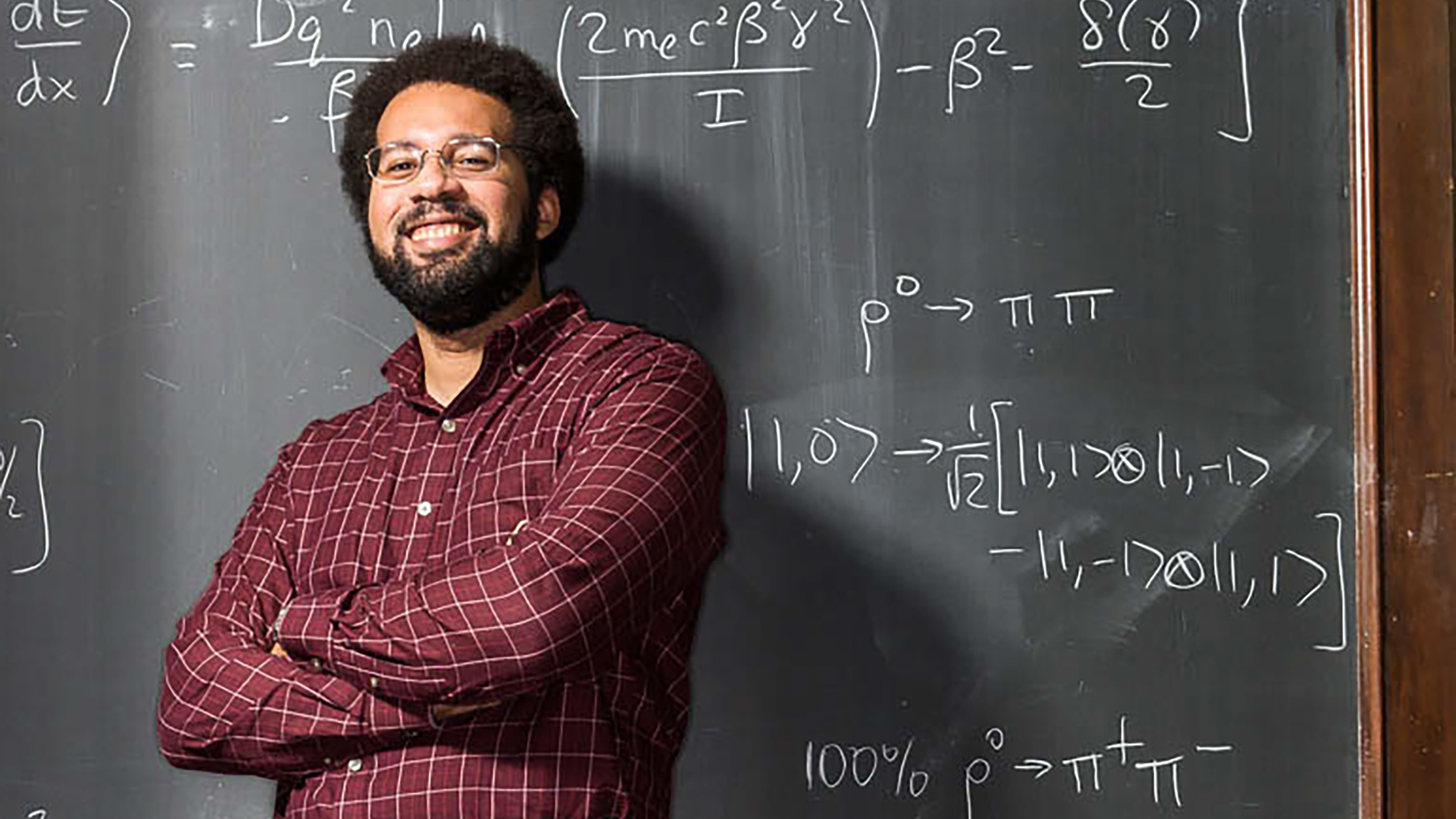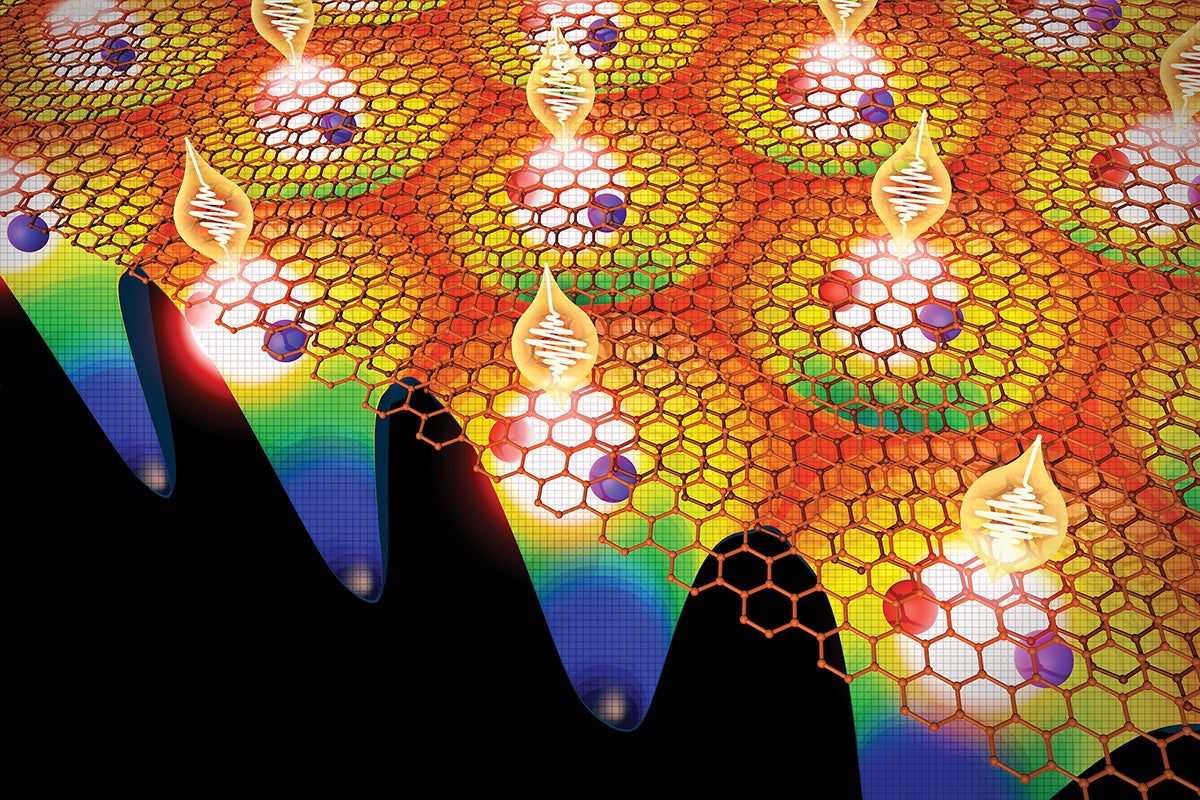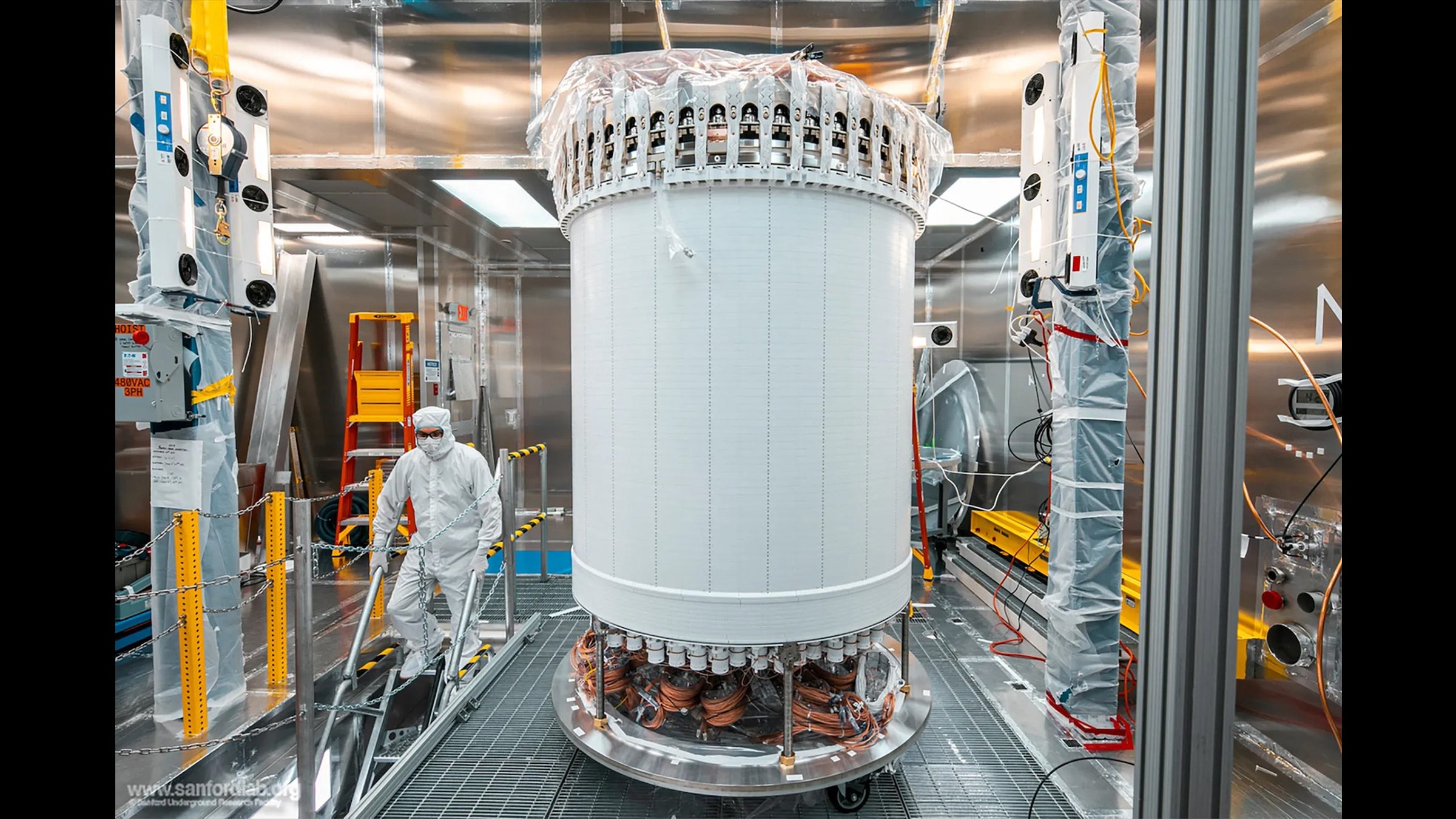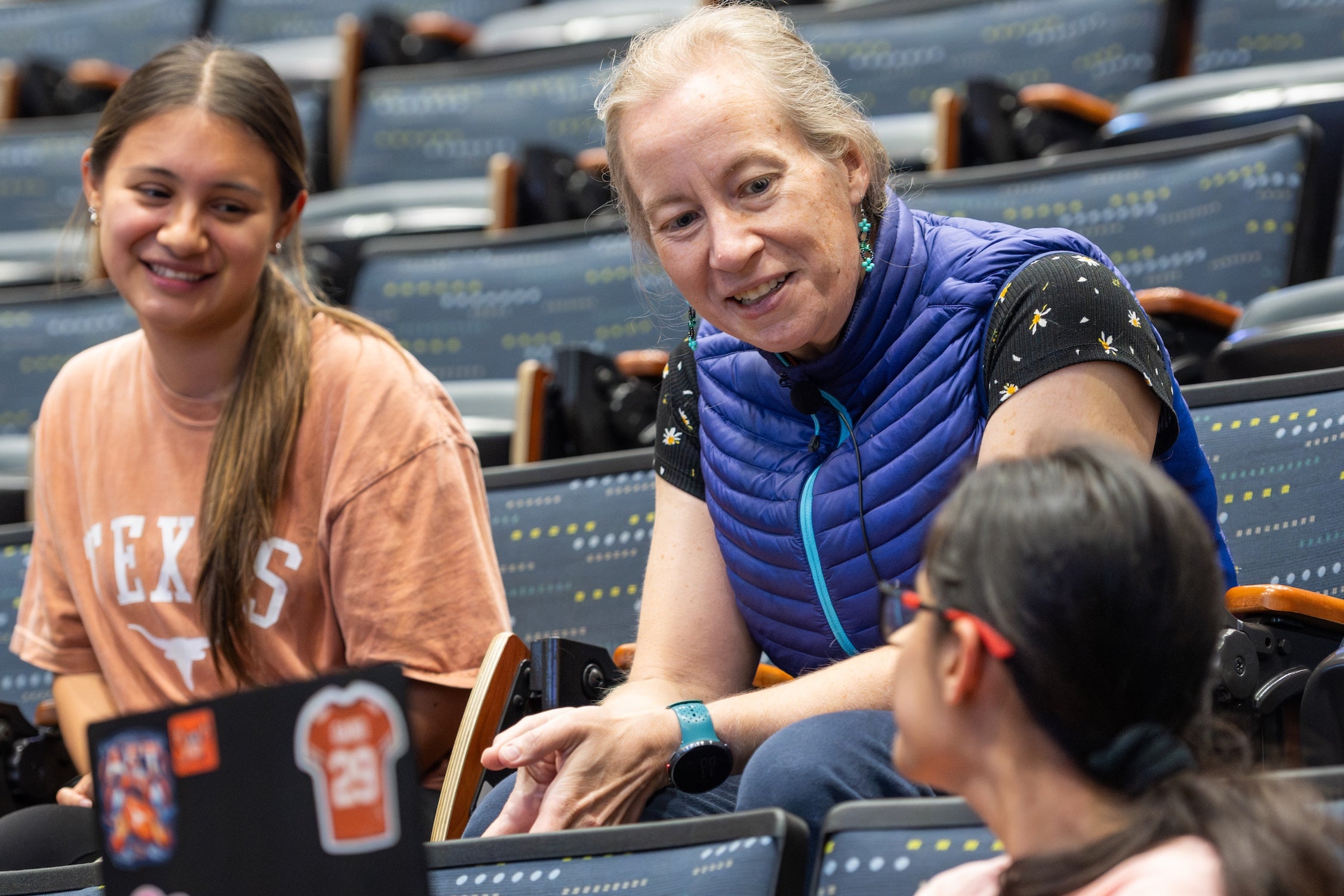Peter Onyisi is Having a Smashing Time Hunting Particles
After the excitement of discovering the Higgs boson, what comes next for particle physics?

Peter Onyisi. Photo by Jeff Wilson.
Physicist Peter Onyisi, assistant professor in the College of Natural Sciences, was part of a team at CERN working with the Large Hadron Collider (LHC) that discovered something that looked like the Higgs boson particle.
You were part of a team working to discover the Higgs boson. When the big announcement came in 2012, no one came right out and said "We have found the Higgs boson." Everything was couched in very cautious, statistical language. Now, after additional research, are you confident that what you've found really is the Higgs boson?
At the time, we didn't have enough constraints on how it was behaving to do much more than say, well it's within 60 percent of what we would expect. Now, it's still possible there are deviations in its properties by ten percent from what we had expected, but at some point, calling it "the object which is similar to the Standard Model Higgs boson" gets a little repetitive, so we might as well call it the Higgs boson. It's not in any way that we can tell violently different from predictions.
The Higgs boson was back in the news last October when Danish scientists claimed that the new particle might be something other than the Higgs boson. How do you respond to that?
You can certainly think of other explanations for what we've found, and many people have. But so far, ours is the simplest explanation that fits the known properties of this particle. It is also predicted by the Standard Model of Physics. The Danish paper requires that you replace a whole section of the Standard Model with something else. If we find some difference that says this is not the standard model Higgs boson, then we'll be just as happy to learn that. But the fact that you can think up other kinds of theories doesn’t cause us to say, "The Standard Model is dead." Instead, we ask, "What does it predict that isn't predicted by the Standard Model?" Then we can go and test that hypothesis.
So after all the excitement of that discovery, has continuing to work in this area been a bit anticlimactic?
Finding a specific particle is a benchmark that's easy to explain. Maybe saying we're going to find the Top Yukawa Coupling to 20 percent doesn't sound quite as exciting, but it is every bit as critical to understanding how the universe works. It's also possible that we'll do these very prosaic measurements on the Higgs boson and we'll find something very strange about it. And to me that's every bit as exciting as finding a new particle.
Did the discovery open up any new questions?
The mass of the Higgs boson turns out to be in a very strange place that raises the possibility that our universe is inherently unstable. If that's true, the universe might eventually destroy itself.
That's assuming we don't find any new physics to repair the problem. It's actually easy to fix if you add more particles to the theory. The interesting thing is that if the mass of the Higgs had been just a little bit lighter, then we'd definitely know we would have to have extra particles, otherwise, we wouldn't be here. And if it were a bit heavier, the universe would absolutely be stable. It's the fact that the mass of the Higgs is in this small regime that this even comes up. We don't know if this is significant or just an interesting coincidence.

Onyisi is part of a team using the ATLAS instrument (pictured) to study particle collisions in CERN's Large Hadron Collider.
So it's possible that there are more particles waiting to be discovered?
According to Supersymmetry, a theoretical framework that suggests every particle has a partner with similar but not quite the same properties, there should actually be five particles in the Higgs boson sector as opposed to just one. If these other particles exist, they would be totally different from the one we've found, but they would also be Higgs bosons. So we'll start up the machine again and in 2016 you might hear, "The LHC discovers second Higgs boson." It could happen. Supersymmetry is appealing because it solves a lot of problems in physics, including dark matter. It's the kitchen sink of solving theoretical problems. The downside is that no one has seen evidence of it yet. Lots of people are looking, of course.
So what have you been working on since the initial discovery?
If you're trying to make a Higgs boson, there are four main ways you could produce it. I've been working on the most difficult one to observe, in which a Higgs boson is produced along with two top quarks. We expect it should happen, but so far, the evidence for it is extremely mild.
The Higgs boson likes to interact with heavy things and since the top quark is the heaviest thing we know about, theory suggests that this interaction is what drives Higgs boson behavior. So studying this interaction should tell us a lot about the Higgs.
The Large Hadron Collider has been shut down for the last couple of years for upgrades and is expected to be back online sometime later in 2015. What will these improvements allow you to do?
We're increasing the energy and the data collection ability substantially. For my search, which is looking for top quarks in association with the Higgs, you increase them by almost a factor of four. That's the difference between waiting a very, very long time and having results in a couple of years. So that will be a real exciting time for us.
You had only been involved with the Higgs search for about a year and a half when the discovery was announced. But there were people who had spent decades working on it. How did it feel to be the new person?
For me, I happened to be in a good place at a good time. I wanted to be at the LHC, so it wasn't that accidental. If I had been a postdoc five years earlier, I would not have had the opportunity. In the long-term scheme of things, I was fairly lucky. And I have jumped around a bit in my career. I did some exotic dark matter-like searches when I was an undergrad and then I went and did work involving the strong force and charmed quarks and then I worked on Standard Model production of particles to tune up the machine and all this back and forth. I haven't been in the situation of working for two decades to try and get a specific number out, which some of my more senior colleagues have. And of course, when you're in situations like that, they of course have put so much of their life into that that you have to give them the priority to go ahead with a lot of things.
You're also a teacher. What’s it like toggling between high-level research and teaching undergraduates?
You really do understand the material better than when you first took it! Because now you have a broader depth of experience, you can say, “Here's something that confused me when I first got exposed to it, and it's been bothering me on a subconscious level for years.” So I can try to stop people from being confused by that now, although it is hard sometimes to anticipate what will be confusing to someone. You have a definite mental picture of something and it turns out it's couched in a lot of background knowledge that other people don't have. So when you think you're making a very clear explanation of X, well, no, that's not how it's going to be received. So it's been a very interesting experience.
What do you enjoy about teaching?
It's like being a tour guide. You get to show people the wonders of physics and sometimes they really enjoy it. You might say, “Look at this fantastic result or experiment.” When a student gets it or says, "Oh, wow, this is really neat," then that makes my day.
Read more:
What is a Higgs boson?, Fermilab, July 2011
Stephen Hawking Fears Higgs Boson Doomsday, and He's Not Alone, NBC News, September 2014



